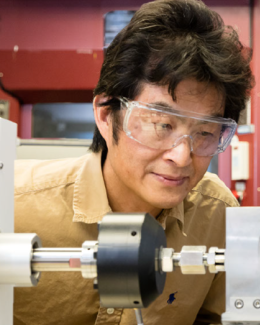Abstract
Testing and characterization of large prototype lead zirconate titanate (PZT) stacks present substantial technical challenges to electronic systems. The work in this study shows that an alternative approach can be pursued by using subunits extracted from prototype stacks. Piezoelectric and dielectric integrity was maintained even though the PZT plate specimens experienced an additional loading process involved with the extraction after factory poling. Extracted 10-layer plate specimens were studied by an electric cycle test under an electric field of 3.0/0.0 kV/mm, 100 Hz to 108 cycles, both at room temperature (22°C) and at 50°C. The elevated temperature had a defined impact on the fatigue of PZT stacks. About 48 and 28% reductions were observed in the piezoelectric and dielectric coefficients, respectively, after 108 cycles at 50°C, compared with reductions of 25 and 15% in the respective coefficients at 22°C. At the same time, the loss tangent varied to a limited extent. The evolution of PZT–electrode interfacial layers or nearby dielectric layers should account for the difference in the fatigue rates of piezoelectric and dielectric coefficients. But the basic contribution to observed fatigue may result from the buildup of a bias field that finally suppressed the motion of the domain walls. Finally, monitoring of dielectric coefficients can be an effective tool for on-line lifetime prediction of PZT stacks in service if a failure criterion is defined properly.


